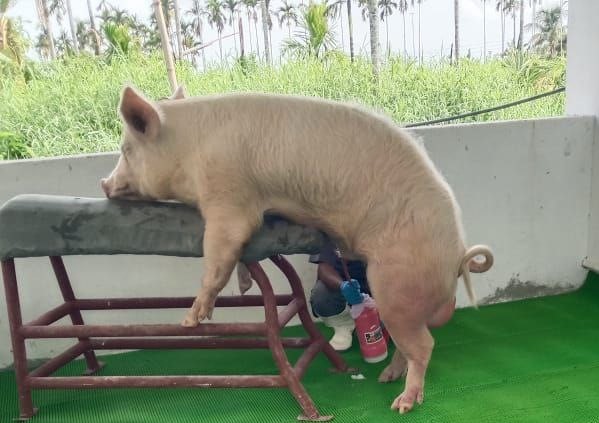DETERMINANTS OF REPEAT BREEDING IN SOWS AND GILTS AT THE NATIONAL PIGGERY DEVELOPMENT CENTRE IN BHUTAN:
A RETROSPECTIVE STUDY
Keywords:
Ambient temperature, correlation, relative humidity, repeat breeding, sow and gilts, temperature-humidity indexAbstract
Repeat breeding represents a substantial economic repercussion in pig breeding. A retrospective analysis of EliteHerd© database (April 2005 - March 2023) and monthly technical reports (October 2015 - March 2023) were analyzed to investigate repeat breeding cases at the National Piggery Development Center (NPiDC) in Bhutan. Data associated with repeat breeding were exported to Microsoft Excel from the EliteHerd© database for descriptive statistics. Data from monthly technical reports were compiled in Microsoft Excel, and correlation and Kruskal-Wallis rank sum tests were performed using R v4.2.0. Overall, 19.2% of sows and gilts showed repeat breeding, with 44.2% (n=540) repeating regularly within specific interval (18-24 or 39-45 days), and 55.8% (n=682) repeating irregularly at varying times (0-17 or 25-38 or 46-108 days). Gilts representing 28.2% (n=461) of cases, experienced comparatively more repeat breeding, which declined with increasing parity. While a low positive correlation was observed between repeat breeding and thermal indices (temperature, humidity, and temperature-humidity index), other possible determinants were noticed. Increasing sow numbers (2%) coupled with declining boar numbers (5.8%) seemingly led to high usage of certain superior boars, potentially affecting fertility and return to service. About 38% (n=28) of the breeding boars were at times highly used. About 36% (n=440) of repeat breeders had returned ≥3 times and were not culled as technically required. Therefore, the determinants of repeat breeding were deemed to be the combined effect of hot summer temperature, high humidity, over-use of certain superior boars due to increasing sow levels, and non-culling of severe repeat-breeders on the farm among many other contributing factors.

Downloads
Published
License
Copyright (c) 2024 Bhutan Journal of Animal Science

This work is licensed under a Creative Commons Attribution 4.0 International License.





